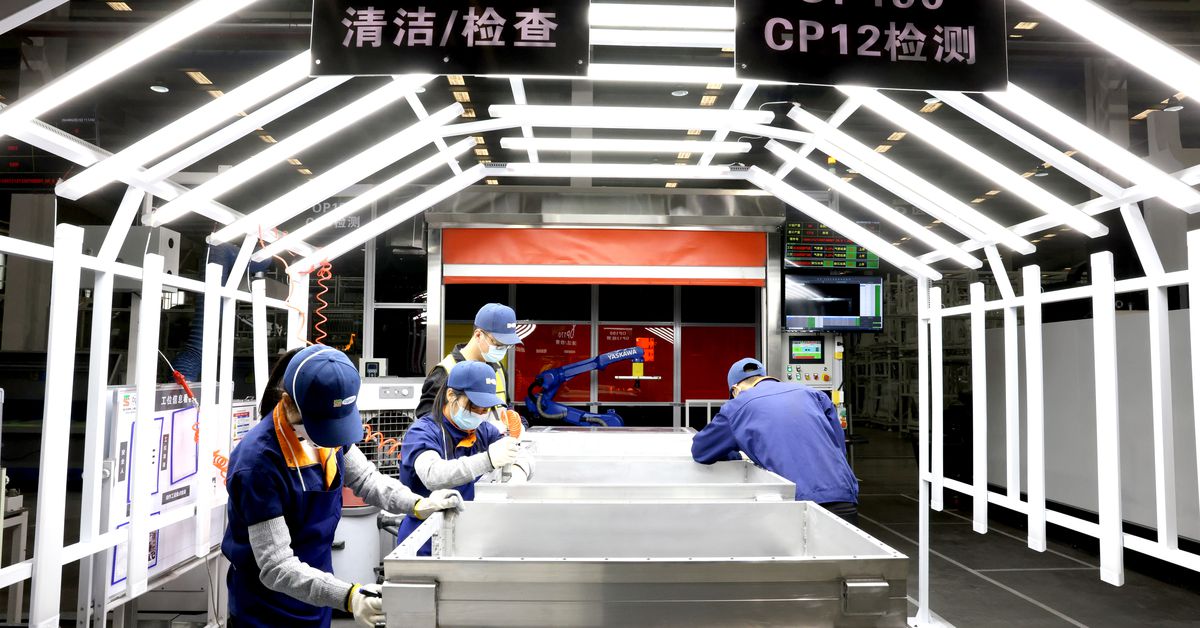
There are new tariffs on imports of Chinese goods
Import tariffs on Chinese goods: the latest action of the Biden administration on domestic manufacturing and unfair trade practices in the U.S.
President Biden will impose import tariffs on $18 billion of Chinese goods in order to protect the vital sectors of the economy and punish China for unfair trade practices.
Treasury Secretary Janet Yellen said in a statement that she raised concerns last month during a trip to Beijing about “artificially cheap Chinese imports,” concerns that she said many other countries share. She said the tariffs are necessary to protect American workers from unfair products from other countries.
The move comes as Biden pushes for the passage of three pieces of legislation that have hundreds of billions of dollars of subsidies to boost the domestic manufacturing and clean energy sectors.
“We know China’s unfair practices have harmed communities in Michigan and Pennsylvania and around the country that are now having the opportunity to come back due to President Biden’s investment agenda,” Lael Brainard, Biden’s top economic adviser, told reporters.
“One of the challenges is once tariffs have been imposed, it is quite difficult politically to reduce them — because the affected industry tends to get used to them, like them, operate with them as baked into their plans,” said Michael Froman, who was U.S. Trade Representative during the Obama administration.
The White House tried to separate its strategy from Trump’s. It points to comments made by Trump in rallies and interviews that he would broaden tariffs on all imported goods, including targeting Chinese cars, if he wins the election — something that they said would hike consumer prices.
The White House said that Chinese officials were unlikely to retaliate against the new tariffs since they had discussed them during meetings of top US and Chinese officials.
It’s the latest move the US has taken amid efforts to ramp up domestic manufacturing while escalating trade tensions with China. The increase in tariffs is estimated to affect $18 billion in annual imports.
The move, just the latest in a flurry of actions taken by the Biden administration against Chinese vehicles and their components, comes at a delicate time for the US electric vehicle industry, which lags behind China not only in vehicle price but quality.
Tariffs on permanent magnets, natural graphite, and certain other critical minerals are also set to rise to 25 percent from zero over the next couple of years. The materials of solar panels, steelmaking, and batteries are made with the same type of carbon called graphite. Certain steel and aluminum products will see tariffs rise to 25 percent from today’s zero to 7.5 percent.
Meanwhile, US-based solar manufacturers are celebrating the decision to raise tariffs on solar cells to 50 percent from the previous 25 percent. “The Administration made the right decision to strengthen protections for solar components we seek to build in the U.S.,” Mike Carr, executive director of the Solar Energy Manufacturers for America Coalition, said in an emailed petition.
Forty percent of the solar-grade polysilicon manufacturing in China takes place in the western region of the country, which the US has decided to block from solar imports.
The Future of the US Auto Industry: How the Inflation Reduction Act is Trying to Walk a Line, and What We Can Do About It
The impact of climate change on the US auto industry is not the only one that’s at stake. The US Energy Information Administration says that motor and diesel fuel use accounted for 32% of the country’s energy related carbon dioxide emissions last year.
Even with more time, the future will be complicated. Even as they continue to pour billions into electric vehicle and battery development, auto companies in the US will need to figure out how to stay afloat. Electric vehicle sales have grown in the US, but that growth has slowed.
The Inflation Reduction Act encourages billions to build up domestic supply chains for electric vehicles and other renewable energy sources. Those efforts could take a long time.
“The administration is trying to walk a line,” says Susan Helper, a professor of economics at Case Western Reserve University, who worked on electric vehicle policy in the Biden administration. “One goal is a strong auto industry with good jobs and clean production methods, and the other is fast action on climate change. In the long-term, they’re consistent with each other. There is conflict in the short term.

